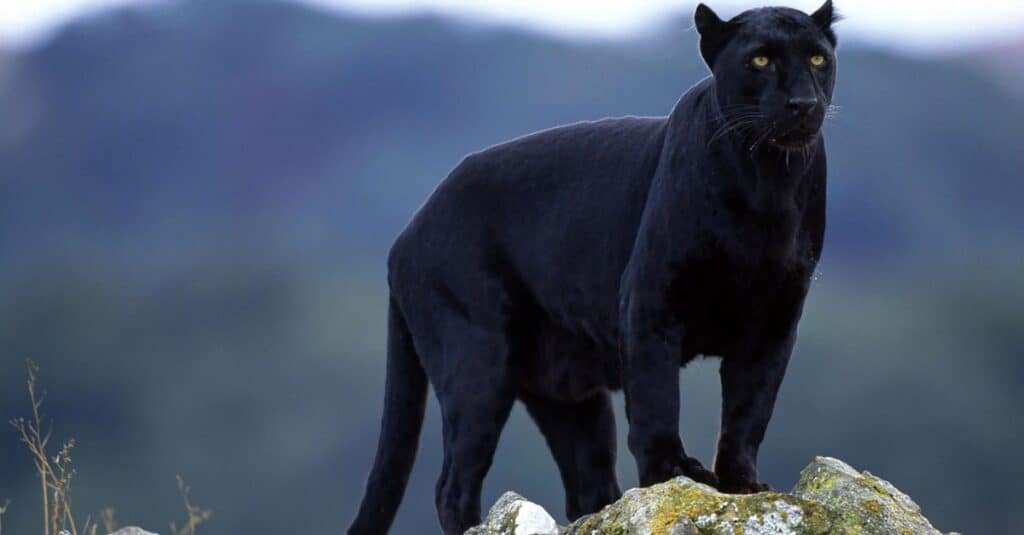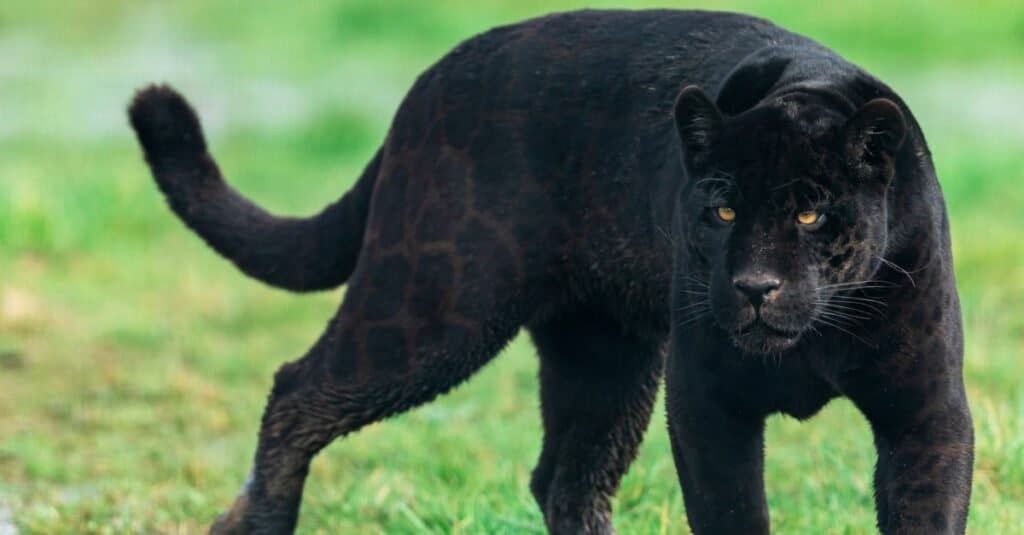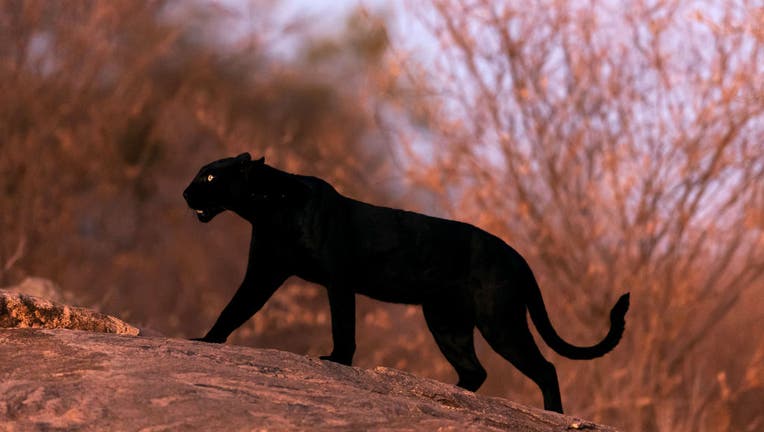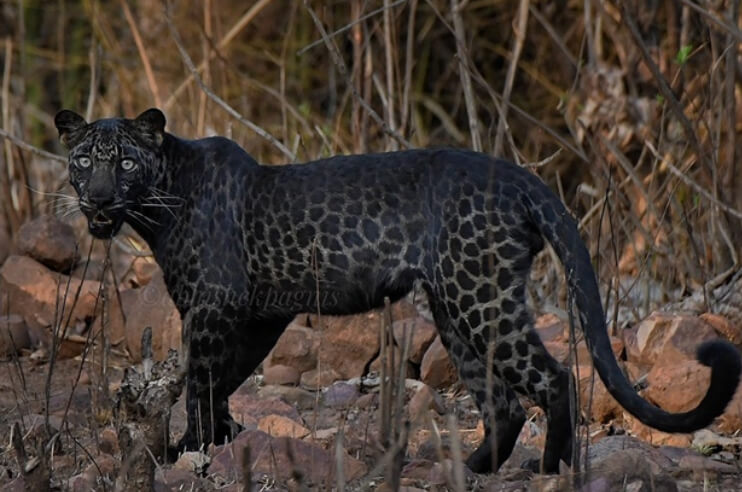Panther: Graceful Predators of the Wild
Introduction:
Panthers, also known as black panthers or melanistic leopards and jaguars, are majestic and enigmatic big cats that captivate the imagination with their sleek black coats and piercing eyes. Found in various regions around the world, these stealthy predators are revered for their strength, agility, and adaptability. This essay explores the fascinating world of panthers, shedding light on their biology, behavior, habitat, conservation status, and cultural significance.
Biology and Physical Characteristics:
Panthers belong to the genus Panthera, which also includes lions, tigers, and leopards. What distinguishes panthers from other big cats is their melanistic coloration, caused by a genetic mutation that results in an excess of dark pigment melanin in their fur. Despite their name, black panthers aren't a distinct species but rather melanistic variants of leopards (Panthera pardus) in Africa and Asia, and jaguars (Panthera onca) in the Americas.
The sleek black coat of panthers serves as effective camouflage in dense forests, allowing them to stalk prey undetected. Beneath their dark exterior, their fur pattern is still visible under certain lighting conditions, revealing the characteristic rosettes or spots typical of their non-melanistic counterparts.
Panthers exhibit a compact and muscular build, with powerful limbs and sharp claws adapted for climbing, pouncing, and gripping prey. They possess keen senses, including acute vision, hearing, and sense of smell, which aid them in hunting and navigating their environment.
Behavior and Hunting:
Panthers are solitary and elusive creatures, preferring to roam and hunt alone within their expansive territories. They are primarily nocturnal hunters, relying on stealth and ambush tactics to catch prey under the cover of darkness. Their diet consists of a variety of animals, including deer, wild boar, monkeys, and smaller mammals.
Panthers are apex predators at the top of the food chain, with few natural predators apart from humans. Their hunting success relies on their agility, speed, and keen senses, allowing them to outmaneuver and overpower their prey with precision and efficiency.
Despite their solitary nature, panthers communicate with other individuals through vocalizations, scent marking, and visual cues. Roaring, growling, and hissing are common vocalizations used for territorial defense and mating displays.
Habitat and Range:
Panthers inhabit a diverse range of ecosystems, including tropical rainforests, savannas, swamps, and mountainous regions. Their distribution varies depending on the species and subspecies, with leopards found in Africa and Asia, and jaguars in Central and South America.
Leopards are highly adaptable and can thrive in a variety of habitats, from dense jungles to arid deserts. They are found across sub-Saharan Africa, with notable populations in countries like Kenya, Tanzania, South Africa, and India.
Jaguars, on the other hand, are primarily found in the dense rainforests of the Amazon basin, as well as in the marshlands and scrublands of Central and South America. They play a crucial role in maintaining the ecological balance of their habitats as top predators.
Conservation Status and Threats:
Despite their formidable reputation, panthers face numerous threats to their survival in the wild. Habitat loss and fragmentation due to deforestation, urbanization, and agricultural expansion pose significant challenges to their long-term viability. Encroachment by humans into panther habitats increases the likelihood of human-wildlife conflicts, leading to retaliatory killings and poaching. Illegal wildlife trade also poses a threat to panther populations, driven by demand for their skins, bones, and body parts in traditional medicine and the exotic pet trade. Furthermore, conflict with livestock farmers, depletion of prey species, and road mortality further exacerbate the conservation challenges faced by panthers.
Illegal wildlife trade also poses a threat to panther populations, driven by demand for their skins, bones, and body parts in traditional medicine and the exotic pet trade. Furthermore, conflict with livestock farmers, depletion of prey species, and road mortality further exacerbate the conservation challenges faced by panthers.
Efforts to conserve panther populations involve a combination of habitat protection, anti-poaching measures, community engagement, and scientific research. Conservation organizations work tirelessly to raise awareness about the plight of panthers and advocate for policies that promote coexistence between humans and wildlife.
Cultural Significance and Symbolism:
Panthers hold a prominent place in the mythology, folklore, and symbolism of various cultures around the world. Revered for their strength, agility, and mystical allure, panthers are often depicted as symbols of power, courage, and cunning.
In many indigenous cultures of the Americas, jaguars are revered as sacred beings and are believed to possess supernatural powers. They are often depicted in art, stories, and rituals as guardians of the natural world and spirit guides for hunters and warriors.
In African folklore, leopards are revered as symbols of royalty and are associated with qualities such as stealth, wisdom, and leadership. They feature prominently in traditional stories, proverbs, and rituals as symbols of strength and resilience.
In popular culture, panthers have been immortalized in literature, film, and art as iconic symbols of mystery and intrigue. Characters like Bagheera from Rudyard Kipling's "The Jungle Book" and the Black Panther superhero from Marvel comics have cemented the panther's status as a cultural icon. Panthers, with their grace, power, and mystique, continue to captivate our imagination and inspire awe and admiration. As apex predators, they play a crucial role in maintaining the health and balance of their ecosystems, making their conservation essential for the preservation of biodiversity.
Panthers, with their grace, power, and mystique, continue to captivate our imagination and inspire awe and admiration. As apex predators, they play a crucial role in maintaining the health and balance of their ecosystems, making their conservation essential for the preservation of biodiversity.
Through concerted conservation efforts and greater awareness, we can ensure that panthers continue to roam the wild for generations to come, enriching our planet with their presence and reminding us of the beauty and resilience of the natural world.
Furthermore, the significance of panthers extends beyond their ecological role to their cultural and symbolic importance. Across diverse cultures and traditions, panthers hold a special place in mythology, folklore, and symbolism, representing a potent blend of strength, mystery, and spiritual power.
In Native American cultures, the jaguar holds a revered status as a guardian spirit and symbol of protection. Tribes such as the Maya, Aztec, and Inca worshipped jaguars as gods and believed that shamans could transform into these majestic cats to access their supernatural abilities. The jaguar's association with the night and the underworld imbued it with a sense of mysticism and reverence.
Similarly, in African cultures, the leopard is often depicted as a symbol of royalty, wisdom, and cunning. Among tribes like the Maasai and Zulu, leopard skins were worn by chiefs and warriors as symbols of status and authority. Leopards were also seen as powerful totems, embodying the qualities of stealth and adaptability prized by hunters and warriors.
In contemporary popular culture, panthers continue to fascinate and inspire. From literature and film to art and fashion, panthers are recurring motifs that evoke a sense of allure, danger, and sophistication. Artists like Henri Rousseau and Salvador Dalí have depicted panthers in their works, capturing the enigmatic allure of these elusive creatures.
In literature, panthers often symbolize the untamed forces of nature, the subconscious mind, and the darker aspects of human nature. In Rudyard Kipling's "The Jungle Book," Bagheera, the wise and protective black panther, serves as a mentor and guardian to Mowgli, the young protagonist raised by wolves in the jungle. Bagheera's grace, intelligence, and loyalty make him one of the most beloved characters in children's literature. Similarly, in the realm of fashion and design, the sleek and elegant silhouette of the panther has inspired countless designers and artists. From haute couture gowns adorned with panther motifs to jewelry featuring intricately carved panther heads, the panther's image exudes a sense of luxury, power, and sensuality.
Similarly, in the realm of fashion and design, the sleek and elegant silhouette of the panther has inspired countless designers and artists. From haute couture gowns adorned with panther motifs to jewelry featuring intricately carved panther heads, the panther's image exudes a sense of luxury, power, and sensuality.
In conclusion, panthers occupy a unique and revered place in both the natural world and human culture. As magnificent predators, they play a vital role in maintaining the balance of ecosystems and symbolize the beauty and resilience of the wilderness. Their cultural significance, spanning centuries and continents, speaks to the enduring fascination and reverence that panthers evoke in the human imagination. By embracing the mystique and majesty of panthers, we honor not only the creatures themselves but also the profound connection between humans and the wild world that surrounds us.




































